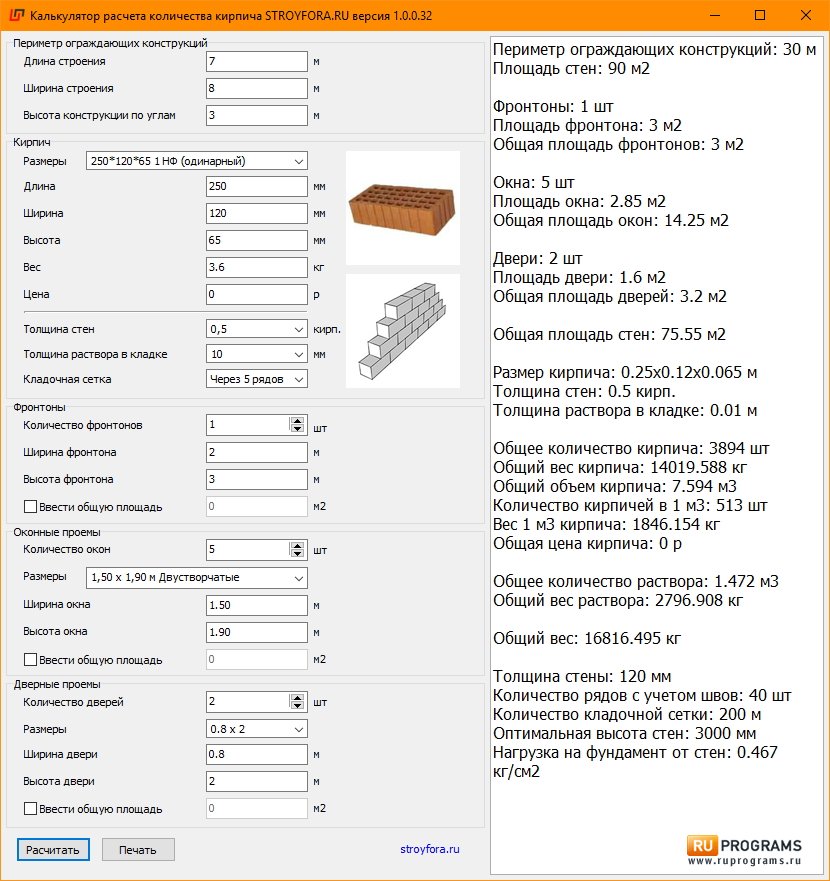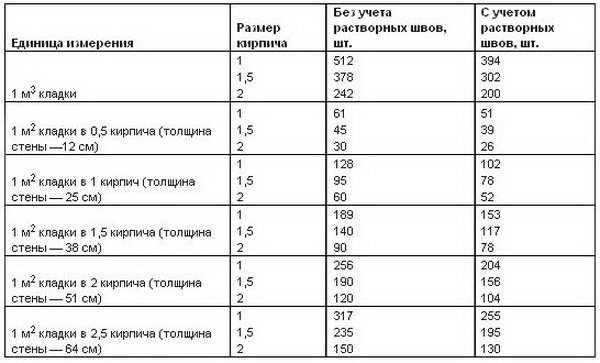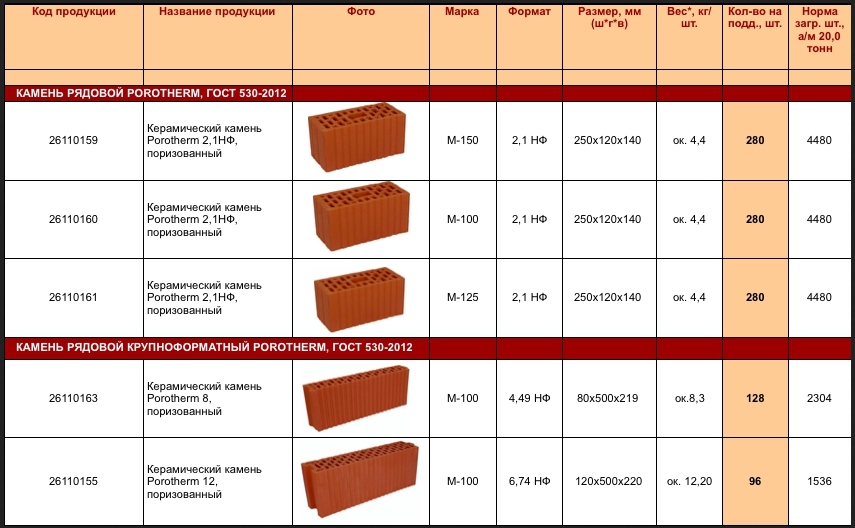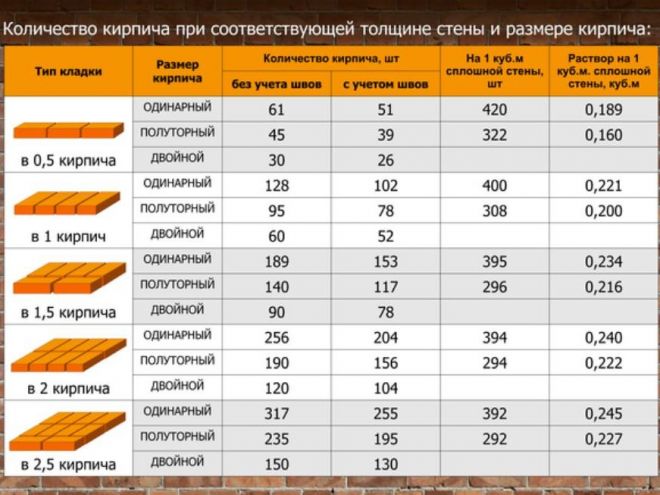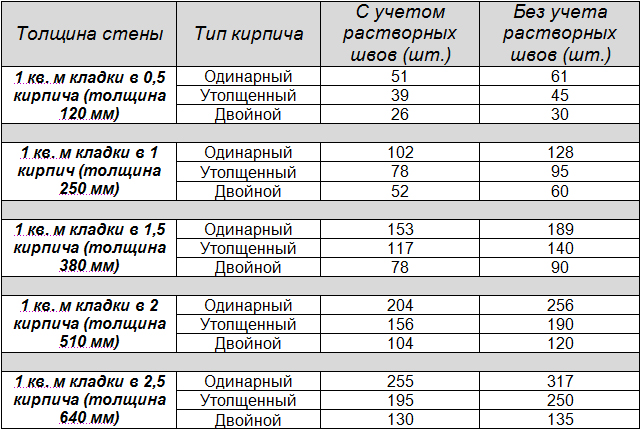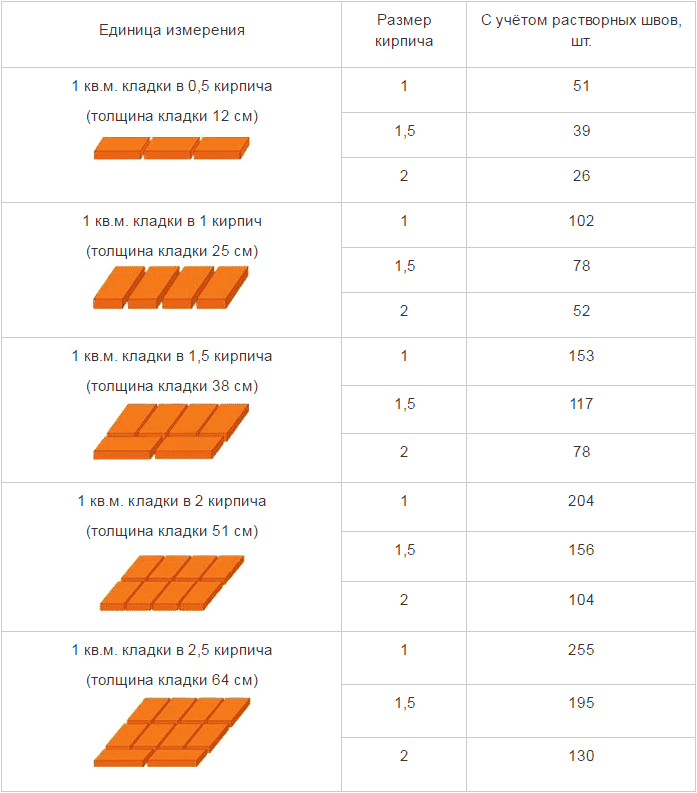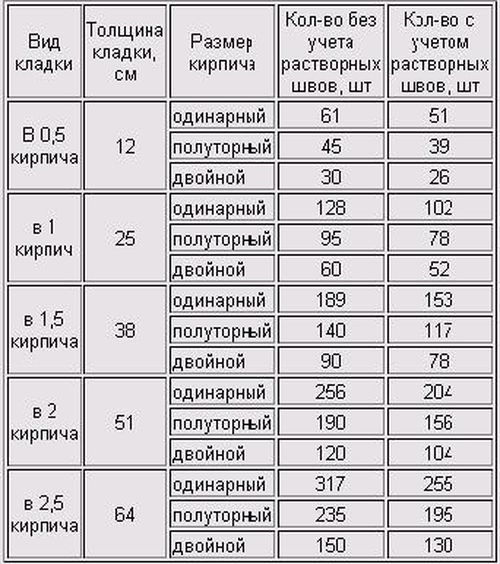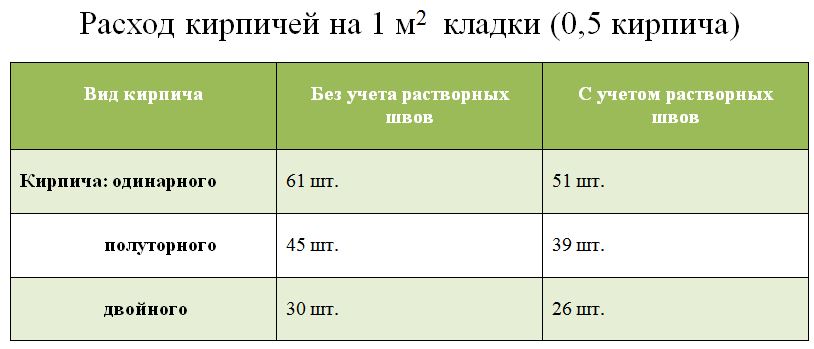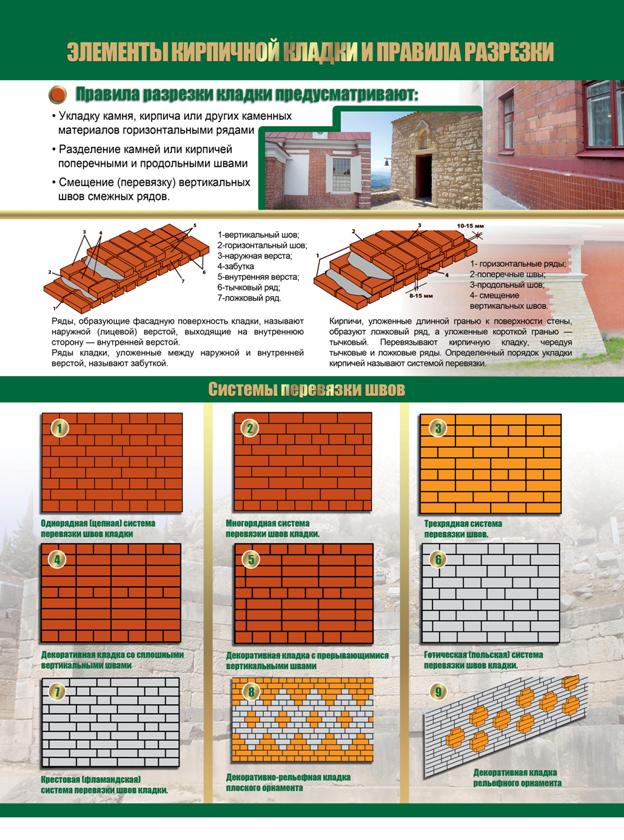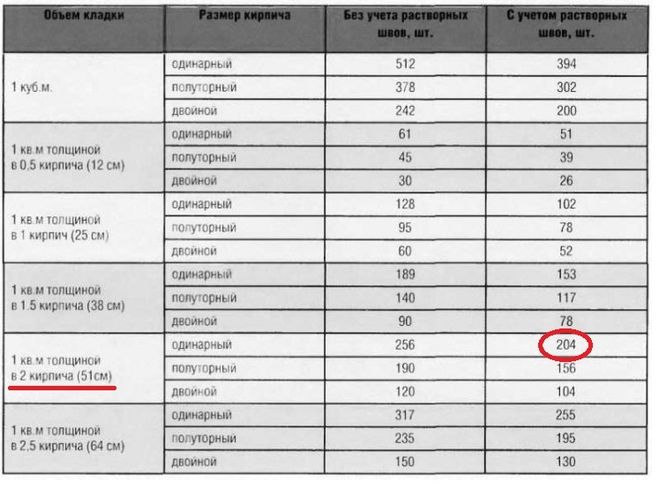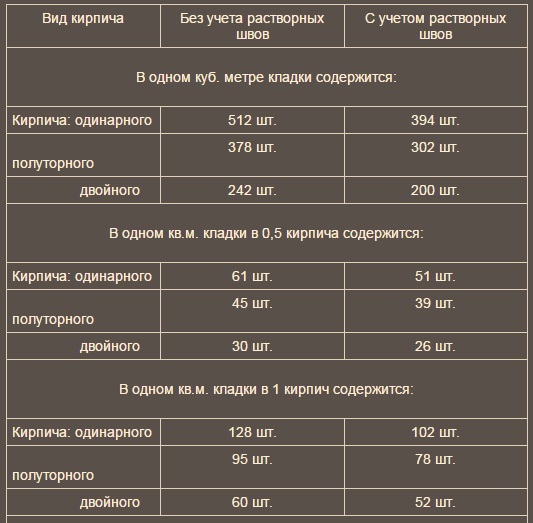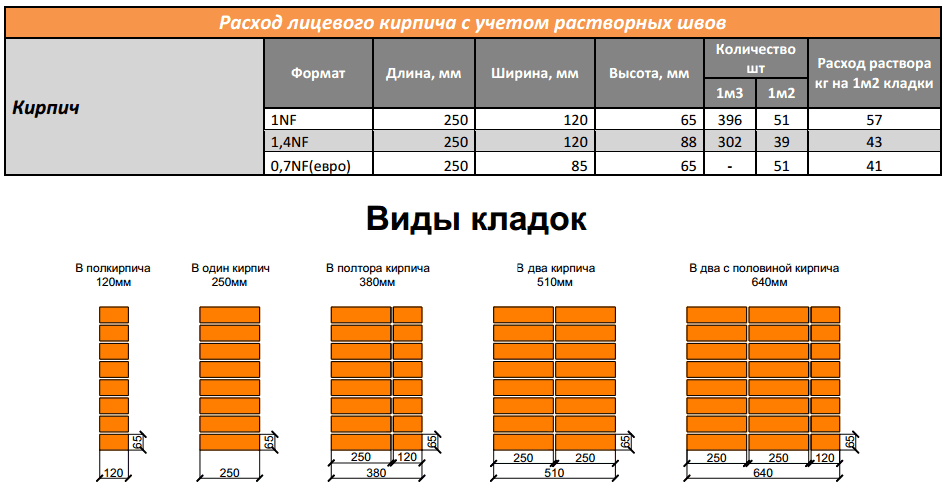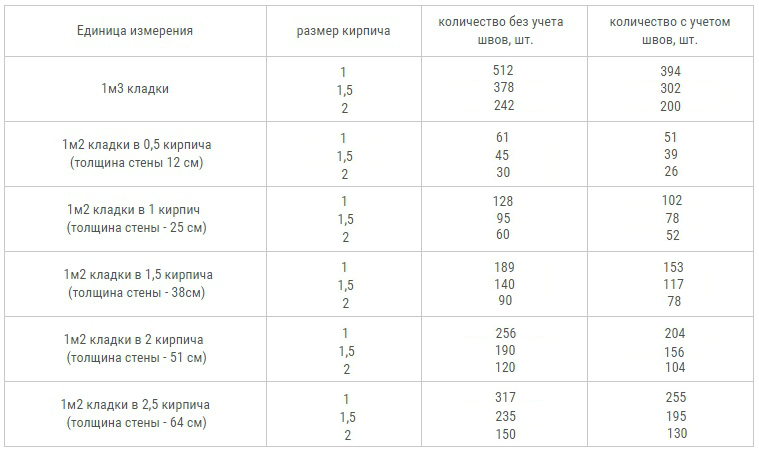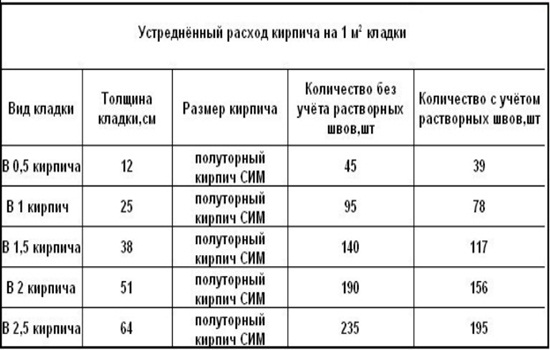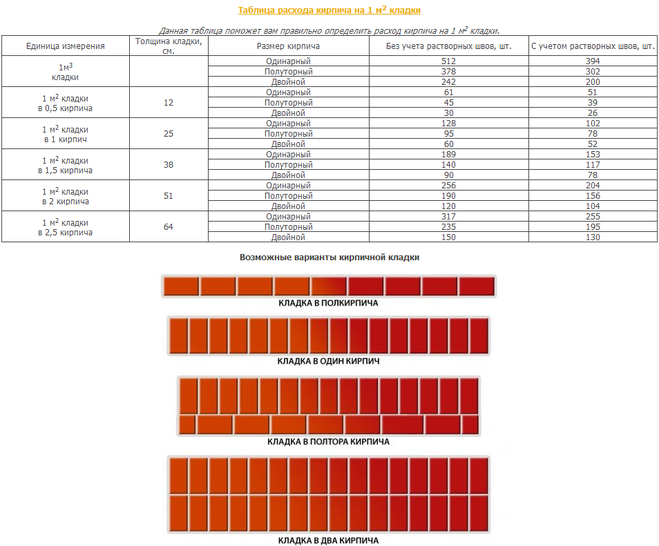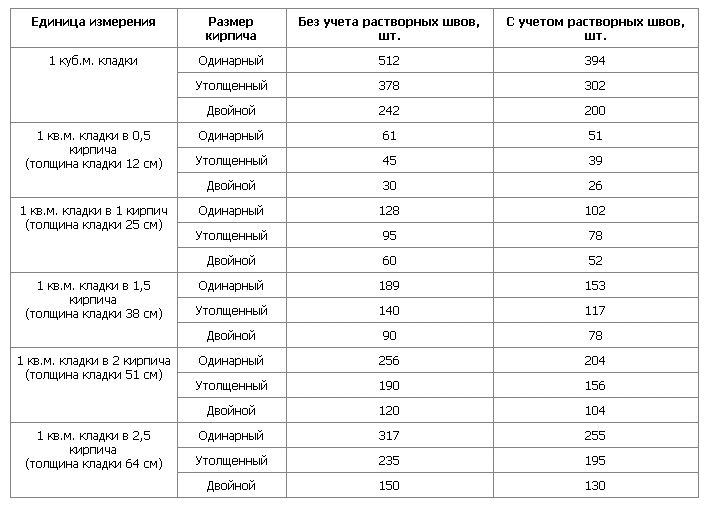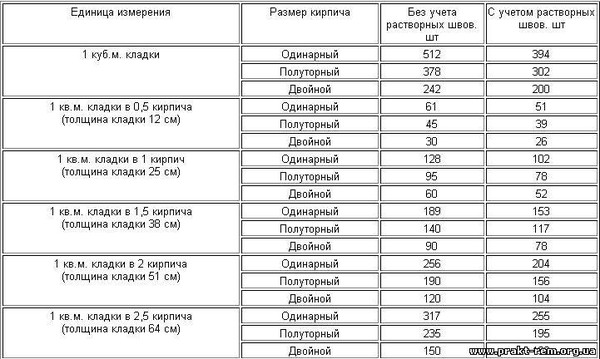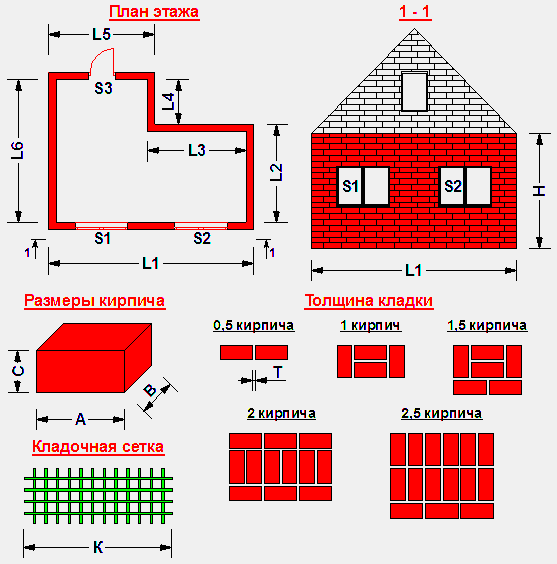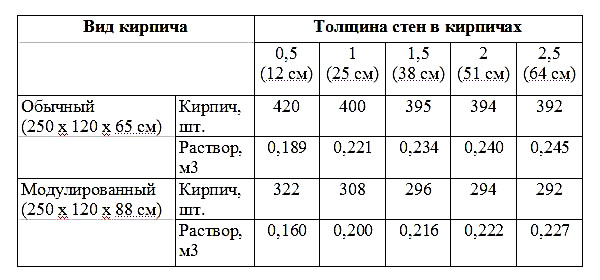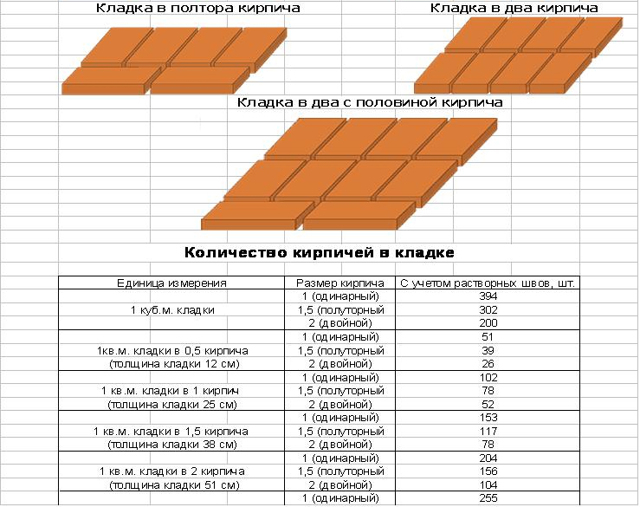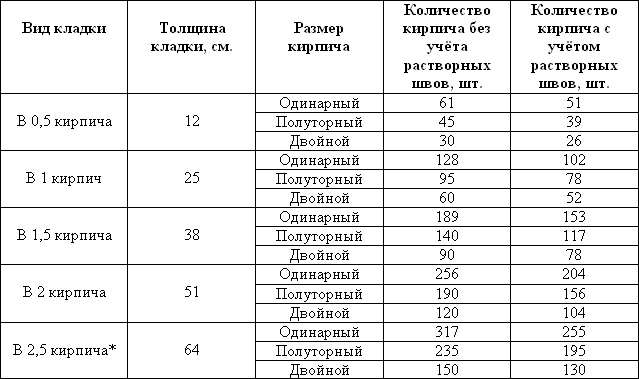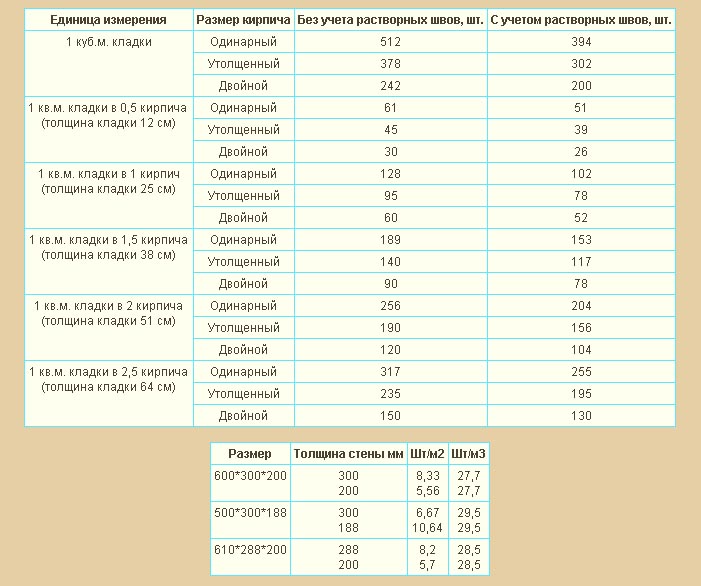How to calculate?
In order to correctly perform the operation to establish the required number of bricks required for building a house, you will have to split the work into several stages
It doesn't matter which one you decide to build a house: a small low one or a large two-story house with an attached garage, a winter garden or a terrace, the principle of calculation is the same. First you need to calculate the area of the outer walls.
A similar calculation of the area is carried out for the interior walls.
Then you need to calculate the areas of window and door openings. In the project, as a rule, not areas are indicated, but linear dimensions. To calculate the areas, you will have to use the formula familiar from school, multiplying the height by the width. If the openings are the same, you can find the area of one opening, for example, a window opening, and multiply the result by the number of future windows. If the overall dimensions in different rooms are different, you need to do calculations for each separately.
All the resulting areas of the openings are added and subtracted from the area obtained for the walls. Finding out how much brick goes to a known volume or area is quite simple. For example, 200 sq. m of masonry in 1 standard (single) brick will leave without taking into account the seams 61 x 200 = 12 200 pieces, and taking into account the seams - 51 x 200 = 10 200 pieces.
Let's give an example of calculating the consumption of bricks. Let's say you are planning to build a two-story brick house. The width of the building is 9 m, the length is 11 m, and the height is 6.5 m. The project provides for a masonry of 2.5 bricks, and the outside is facing with 0.5 bricks, and the main wall is laid out of double bricks. Inside the building, the walls are one brick thick. The total length of all internal walls is 45 m. In the external walls there are 3 doorways 1 m wide and 2.1 m high. The number of window openings is 8, their dimensions are 1.75 x 1.3 m. Inside there are 4 openings with parameters 2, 0 x 0.8 m and one 2.0 x 1.5 m.
Determine the area of the outer walls:
9 x 6.5 x 2 = 117 m2
11 x 6.5 x 2 = 143 m2
117 +143 = 260 m2
Doorway area: 1 x 2.1 x 3 = 6.3 m2
Window area: 1.75 x 1.3 x 8 = 18.2 m2
In order to correctly determine the completely solid area of the outer walls, the area of all openings must be subtracted from the total area: 260 - (6.3 + 18.2) = 235.5 m2. We determine the area of the internal walls, taking into account the fact that brick walls are located only on the first floor with a ceiling height of 3.25 m: 45 x 3.25 = 146.25 m2. Without taking into account the openings, the area of the walls inside the room will be:
146.25 - (2.0 x 0.8 x 4) - (2.0 x 1.5) = 136.85 m2
It remains to calculate the number of bricks based on the previously mentioned consumption per 1 square meter:
double: 235.5 x 104 = 24 492 pcs;
facing: 235.5 x 51 = 12,011 pcs;
single: 136.85 x 102 = 13 959 pcs.
The number of units is approximate, rounded to one whole.
With the same overall dimensions of the house, we will perform the calculation by volume. First, let's determine the volume of the walls. To do this, the length of one of the sides of the house (for example, the smaller one, 9 meters long) is taken in full and we calculate the volume of two parallel walls:
9 (length) x 6.5 (height) x 0.64 (2.5 brick thickness) x 2 (number of walls) = 74.88 m3
The length of the second wall is reduced by (0.64 mx 2), that is, by 1.28 m. 11 - 1.28 = 9.72 m
The volume of the remaining two walls is equal to:
9.72 x 6.5 x 0.64 x 2 = 80.87 m3
Total wall volume: 74.88 + 80.87 = 155.75 m3
The number of bricks depends on the type chosen and will be for:
- single: 155.75 m3 x 394 pcs / m3 = 61 366 pcs;
- thickened: 155.75 m3 x 302 pcs / m3 = 47,037 pcs;
- double: 155.75 m3 x 200 pcs / m3 = 31 150 pcs.
As a rule, building materials are sold not by the piece, but in a batch stacked on a pallet.
For solid bricks, you can focus on the following amount in the pallet:
- single - 420 pcs;
- one and a half - 390 pcs;
- double - 200 pcs.
To order a batch of building material, it remains to determine the number of pallets.
In our last example, the requirement is for bricks:
- single: 61 366/420 = 147 pallets;
- one and a half: 47 037/390 = 121 pallets;
- double: 31 150/200 = 156 pallets.
We do our own calculation
 To find out how many bricks per house you need, you first need to find the perimeter of the house
To find out how many bricks per house you need, you first need to find the perimeter of the house
Now, knowing how many blocks you need to complete a square meter of masonry for a given thickness, you can calculate how many bricks you need for a house. You can use a simple home calculation that involves a number of calculations:
- To find out how many bricks you need per house, you first need to find the perimeter of the house. Since we are using a specific example for the calculation, namely a house with a size of 10x10 m, its perimeter is 10 + 10 + 10 + 10 = 40 m.
- Now we need to find the area of all external enclosing structures minus doorways and windows. Suppose the height of the floor of the house is 3 m, the area of the wall is 40x3 = 120 m². If your house has two or three floors, then the resulting number must be multiplied by 2 or 3. Then you need to find the area of all openings and subtract it from the total area. For example, 120x2-16 = 224 m².
- Further, to find how much brick is needed for a house, you need to multiply the total area of external enclosing structures minus openings by the tabular value of the number of bricks, which you can determine by the width of the wall and the dimensions of the stone. Suppose that the thickness of the walls will be 2 bricks, and we are going to perform the masonry from a single block, which means that for one square meter we need 204 elements, taking into account the thickness of the seam. The total area of the walls, including the gables, is 224 + 50 = 274 m². We multiply this number by 204: 274x204 = 55896, that is, approximately 55900 pieces. So many stones will be needed to build a two-story house with gables of 100 m².
 You should also take into account the number of bricks for the device of partitions.
You should also take into account the number of bricks for the device of partitions.
- But it should be understood that we found only the number of bricks for the construction of the box at home, and besides that, you will need elements for the installation of internal load-bearing walls and partitions. We perform their calculation in the same way, that is, first we find the area of masonry with a thickness of 120 mm and multiply by the tabular value for a structure in the floor of the block, depending on the element used. We also find the area of walls with a thickness of 250 and 380 mm and calculate the need for material. By adding all the values found, you will find the total number of wall stones that you will need to build a house.
Calculation of the number of ceramites
Obviously, in one square meter of masonry of 1.5 bricks, the number of elements will be greater than with a wall thickness of one length of ceramite. Therefore, several calculations are performed if the structure will include partitions with different characteristics, including the shape of individual blocks. For example, you can calculate how many one and a half bricks in 1 m² of masonry in one ceramite. Sequencing:
- The size of the one-and-a-half element is fixed - 250x120x88 and the wall thickness - 250 mm.
- Along the length of one meter, taking into account the filling of the seams, (1000/260) * 2 = 7.69 pieces are placed.
- The number of blocks in height is 1000/98 = 10.20. Here it is not multiplied by 2 - this was taken into account by the previous action.
- The desired result is 7.69 * 10.20 = 78 pcs.
Alternative way
It is based on determining the surface area of a single masonry element and further shifting towards establishing the quantity depending on the wall thickness. The initial data remains the same as in the previous calculation. The algorithm of actions is as follows:
- The area of the lateral surface of one element is determined as 0.26 * 0.098 = 0.02548 m².
- For a half-brick wall, the number of blocks will be 1 / 0.02548 = 39 pieces.
- The required value according to the condition of the problem - the number of ceramites in 1 m² of brickwork with a thickness of brick will be 39 * 2 = 78 pcs.
As you can see from the result, both methods gave the same answer. To simplify the use of data when determining the need for the purchase of materials, special tables are compiled, in which quantitative indicators are summarized for all options for ceramite masonry.
Table for determining the number of blocks in 1 m² of partitions
| Wall thickness in bricks | 1NF - single, pieces per 1 m² of masonry: close / with a seam | 1,4NF - one and a half, pieces per 1 m2: close / with a seam | 2.1NF - double, pieces in 1 m2: close / with a seam |
| 0,5 | 61/51 | 45/39 | 30/26 |
| 1 | 128/102 | 95/78 | 60/52 |
| 1,5 | 189/153 | 140/117 | 90/78 |
| 2 | 256/204 | 190/156 | 120/104 |
| 2,5 | 317/255 | 235/195 | 150/130 |
Using the table is simple: choose a value suitable for the conditions of the brickwork and multiply by the calculated area of the walls to be built with a given thickness. When determining the volume of the purchase, it is necessary to take into account that the amount of scrap in the purchased ceramite reaches 5% of the total number of bricks.
How to determine the amount of facing bricks in 1 m2 of masonry
The construction of any building begins with an estimate of the building materials that will be required for the implementation of a specific project.
The consumption of facing bricks required to form the walls depends on the linear dimensions of the brick blocks, the thickness of the seam of the cement mixture, as well as the height of the walls and the method of briquetting.
It is unlikely that it will be possible to determine the number of blocks with an accuracy of a brick, but it is quite possible to calculate the approximate number of pieces in 1m2.
Why is the consumption of blocks in m2 calculated? The answer is very simple and lies literally on the surface: this parameter allows you to understand how many briquettes are required for the construction of any building, even the most complex architecture.
Features of counting the number of bricks
To correctly calculate the consumption of bricks, you need to follow these steps:
- Decide on the thickness of the masonry. The walls are formed in half a brick, which is 120 mm, a whole brick, the length of which is 250 mm, one and a half briquettes - 380 mm, two blocks - 510 mm, as well as 640 mm, which is equivalent to two and a half clinkers. The warmer the climate at the location of the building being erected, the thinner the walls can be made. For middle latitudes, a masonry of 2.5 bricks is considered ideal. Also, the thickness of the walls is directly influenced by the number of floors of the building being erected, the type of arches used, as well as the type and depth of the foundation. The higher the structure, the greater the load the walls will have to withstand, therefore, for multi-storey buildings, masonry is made of 2 or more bricks.
- Select blocks for masonry. To understand how many facing bricks are needed to form 1m2 of a wall, you need to know exactly the dimensions of the purchased briquettes. Bricks are produced in single size (250 × 120 × 65 mm), one and a half (250 × 120 × 88 mm) and double (250 × 120 × 138 mm) formats.
- Increase the dimensions of the brick spoon and poke by the thickness of the seam. As a rule, on horizontal surfaces, the cement mixture is laid out with an interlayer of 10 mm, and on vertical surfaces - 12 mm. Since two building blocks are in contact with the seam, to take into account the thickness of the seam when calculating the number of bricks in 1m2 of the wall, half of the seam value is taken, that is, the length of the spoon is increased by 6 mm, and the height of the poke is increased by 5 mm. Based on these data, the area of the spoon is calculated.
- Then 1m2 is divided by the area of the recalculated brick spoon. The resulting value is the approximate number of facing bricks that will be consumed in the formation of each m2 of a wall half a block thick.
- We divide the thickness of the walls by the recalculated width of the brick poke and get the coefficient by which it is necessary to increase the previously obtained number of bricks.
There are several techniques for laying building blocks, but all of them are used to give the facade of a building a certain aesthetic appearance and practically do not affect the amount of bricks per m2 of the wall.
The exception is patterns that are specially formed from bricks when erecting the outer walls of buildings.
In any case, it is the dimensions of the briquettes used that are the key parameter that determines the consumption of materials during construction work.
Important nuances
After calculating how many building blocks are needed for laying each m2 of the wall, the resulting value is increased by 5-7%. This gap is necessary to cover scrap and breakage, which is inevitable when transporting building materials.
How many blocks do you need to build a specific building? To determine the final consumption of briquettes, first calculate the total area of all walls of the object being built. To do this, the height of the walls is multiplied by their length and the dimensions of the windows and entrance doors provided for by the construction project are subtracted.
The total area value is multiplied by the number of bricks in each m2 of masonry. The target number is the number of clinkers required for the construction of this facility.
Correctly carried out calculations will allow not only to determine how much brick will be needed for the construction of a building, but also to significantly reduce the cost of purchasing building materials.
Types of masonry
To execute
calculation, you need to determine which ornament to choose. The wall can be colored
so the drawing will be expressive.
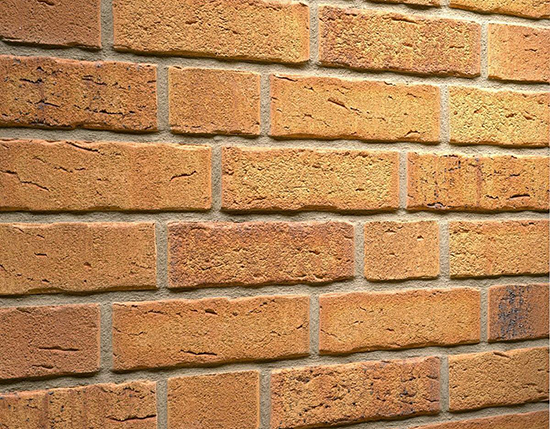
Scroll
popular types of masonry:
- Blocky. Laying rows is done with a spoon
alternately, and on every 2nd row, the side of the brick is laid with a spoon. By
the seams must match exactly. - Gothic. The elements are assembled exactly like this
the same as in the previous version, but the seams between the bricks are displaced. - Track. With the long side, the rows are laid outside. And in each
a row of individual joints should be offset by half. - Lipetsk. Joints are performed strictly according to
seams: three rows in a row are laid out with the long side, and after one row with the short side. - Tychkovaya. Stacking elements
carried out with an offset with the butt side. - Brandenburgskaya. Alternate execution of laying out
bricks: 2 rows of bonded bricks, one spoon. Moreover, the butt row is formed on
harsh line of two spoons.
Still exists
many types of masonry. The chaotic method is often used.
Calculation of the required quantity
To correctly determine the amount of building material required for masonry, you should calculate how many pieces of bricks are in 1 sq. meter. It should be borne in mind which masonry method is adopted, as well as the size of the brick.
If, for example, a masonry of two bricks is required with a one-and-a-half product, then there will be 195 pieces in one square meter. taking into account the battle and excluding the cost of seams. If we count the seams (vertical 10 mm, horizontal 12 mm), then the bricks are estimated to be 166 pieces.
Another example
If the wall is made in one brick, then, without taking into account the parameter of the seams, 128 pieces are used for one square (1mx1m) of masonry. If we take into account the thickness of the seam, then 107 pieces are required
bricks. In the case when it is necessary to create a wall of double bricks, it will be necessary to use it without accounting of seams 67 pcs., taking into account the seams - 55.
Taking into account the seams
In the event of a change in the specified data in the direction of increase, material overruns or the appearance of defective connections between building elements will inevitably follow. If you make a wall or bulkhead one brick thick, then you will need at least 129 pcs. (this is excluding the seam)
If it is necessary to take into account the thickness of the seam, then 101 bricks will be needed. Based on the thickness of the seam, you can estimate the consumption of the solution required for masonry
If the masonry is made with a parameter of two elements, then 258 pieces will be needed without seams, if we take into account the gaps, then 205 bricks will be needed.
Excluding the seam
The brick can be calculated without taking into account the size of the seam, this is sometimes necessary if you make a preliminary calculation. In any case, if you make more accurate calculations, you will have to take into account the coefficient of consumption of the solution from the entire volume of the masonry (0.25).
Calculation table for the required number of bricks.
| P / p No. |
Type and size of masonry |
Length |
Width |
Height |
Number of bricks per piece (excluding seams) |
Number of bricks per piece (taking into account seams of 10 mm) |
| 1 |
1 sq. m masonry in half a brick (masonry thickness 120 mm) |
250 |
120 |
65 |
61 |
51 |
| 2 |
1 sq. m masonry in half a brick (masonry thickness 120 mm) |
250 |
120 |
88 |
45 |
39 |
| 3 |
1 sq. m of masonry in one brick (masonry thickness 250 mm) |
250 |
120 |
65 |
128 |
102 |
| 4 |
1 sq. m of masonry in one brick (masonry thickness 250 mm) |
250 |
120 |
88 |
95 |
78 |
| 5 |
1 sq. m of masonry in one and a half bricks (masonry thickness 380 mm) |
250 |
120 |
65 |
189 |
153 |
| 6 |
1 sq.m of masonry in one and a half bricks (masonry thickness 380 mm) |
250 |
120 |
88 |
140 |
117 |
| 7 |
1 sq. m masonry in two bricks (masonry thickness 510 mm) |
250 |
120 |
65 |
256 |
204 |
| 8 |
1 sq. m masonry in two bricks (thickness 510 mm) |
250 |
120 |
88 |
190 |
156 |
| 9 |
1 sq. m masonry in two and a half bricks (masonry thickness 640 mm) |
250 |
120 |
65 |
317 |
255 |
| 10 |
1 sq. m masonry in two and a half bricks (masonry thickness 640 mm) |
250 |
120 |
88 |
235 |
195 |
Variety
Any type of material has unique distinctive characteristics, since it is used for the construction of various objects.
The beginning of construction is preceded by the calculation and acquisition of the necessary building materials. A well-executed calculation will eliminate material deficiencies or surpluses during construction.
Experts advise to buy material from one batch so that the product does not differ in color.
To perform the calculations, you will need the following data:
- material type;
- the method of masonry, established by starting from the suitable thickness of the walls of the upcoming house;
- the zone of partitions from the inside and external walls is calculated separately;
- the scale of windows, doors.
Depending on the purpose of the structure, weather conditions, they prefer to select the type of product.
Considering the production, the material has subspecies:
ceramic, which include clay raw materials and inclusions. Here are its pros and cons;
silicate brick. You can see its weight here.
the compressed product contains lime and cement. In the manufacture of this brick, cement GOST 31108 2003 is used;
refractory clay is the basis for the production of fireclay products. Here are its dimensions.
Considering the application, the brick product is divided into types:
an ordinary building product is suitable for the construction of internal and external walls of buildings. Here are the dimensions of an ordinary brick;
the facing material belongs to a perfect plane without damage. Here is its size.
Considering the filling, there is a corpulent / hollow product. For the walls of buildings with a large number of floors, only solid brick is used. Hollow building materials are suitable for interior work, including soundproofing.
How many bricks are in 1 m2 of masonry: necessary parameters, options for calculating the required amount
It is possible to determine how many bricks are in 1 m² of masonry under certain conditions, on which the desired figure depends.
Therefore, before tackling the calculations, you should decide on the design features of the barrier being erected. The calculation itself will not cause any particular difficulties.
The number of bricks in 1 m² of masonry walls and partitions is the basis for determining the need for ceramite for the entire volume of construction.
note
When it comes time to plan the procurement of materials for the construction of summer cottages, their characteristics are usually already known: if it is a ceramite fence or an internal partition of a room, the masonry will be half a brick, a household shed is made thick as a whole block, and for the outer wall of a residential building no less than in one and a half ceramite. Depending on the purpose, the following main types of the main element of the masonry are distinguished:
- Red brick is the most durable, it is used in the construction of load-bearing structures and in terms of volume it can be single, one and a half, double.
- White silicate block is used for non-critical structures: internal partitions and gazebos, to give the facade an attractive look. This kind in the form of a double volume is not released.
- Facing ceramite is used to decorate individual structures of architectural objects, and can be single in size with deviations in one direction or another.
To determine how many bricks are in 1 m² of masonry, one must take into account the factors that affect the desired result: the first is the thickness of the walls. It was mentioned above, measured by the length of standard ceramite: ½ part, in a whole block, one and a half, two or more bricks.
The thickness of the mortar joints between the individual elements in the masonry is the third condition for the successful solution of the problem. In the full volume of the wall, approximately one fourth of the gaps are accounted for.
Dimensions of bricks and gaps
There is a state standard - GOST 530–2012 Ceramic bricks and stones, where the nominal dimensions of products and their designations are given. Ceramites are in the greatest demand:
| Dimensions, mm | Normal or single - 1NF | One and a half - 1.4NF | Double - 2.1NF |
| Length | 250 | 250 | 250 |
| Width | 120 | 120 | 120 |
| Height | 65 | 88 | 138 |
The inter-brick space is filled with cement mortar, the average joint size is taken as 1 cm.Standards for the thickness of brickwork, taking into account the filling of the gaps:
| Type of | 0,5 | 1 | 1,5 | 2 | 2,5 |
| Size, mm | 120 | 250 | 380 | 510 | 640 |
Calculation of the number of ceramites
Obviously, in one square meter of masonry of 1.5 bricks, the number of elements will be greater than with a wall thickness of one length of ceramite.
Therefore, several calculations are performed if the structure will include partitions with different characteristics, including the shape of individual blocks.
For example, you can calculate how many one and a half bricks in 1 m² of masonry in one ceramite. Sequencing:
- The size of the one-and-a-half element is fixed - 250x120x88 and the wall thickness - 250 mm.
- Along the length of one meter, taking into account the filling of the seams, (1000/260) * 2 = 7.69 pieces are placed.
- The number of blocks in height is 1000/98 = 10.20. Here it is not multiplied by 2 - this was taken into account by the previous action.
- The desired result is 7.69 * 10.20 = 78 pcs.
Alternative way
It is based on determining the surface area of a single masonry element and further shifting towards establishing the quantity depending on the wall thickness. The initial data remains the same as in the previous calculation. The algorithm of actions is as follows:
- The area of the lateral surface of one element is determined as 0.26 * 0.098 = 0.02548 m².
- For a half-brick wall, the number of blocks will be 1 / 0.02548 = 39 pieces.
- The required value according to the condition of the problem - the number of ceramites in 1 m² of brickwork with a thickness of brick will be 39 * 2 = 78 pcs.
As you can see from the result, both methods gave the same answer. To simplify the use of data when determining the need for the purchase of materials, special tables are compiled, in which quantitative indicators are summarized for all options for ceramite masonry.
Table for determining the number of blocks in 1 m² of partitions
| Wall thickness in bricks | 1NF - single, pieces per 1 m² of masonry: close / with a seam | 1,4NF - one and a half, pieces per 1 m2: close / with a seam | 2.1NF - double, pieces in 1 m2: close / with a seam |
| 0,5 | 61/51 | 45/39 | 30/26 |
| 1 | 128/102 | 95/78 | 60/52 |
| 1,5 | 189/153 | 140/117 | 90/78 |
| 2 | 256/204 | 190/156 | 120/104 |
| 2,5 | 317/255 | 235/195 | 150/130 |
Using the table is simple: choose a value suitable for the conditions of the brickwork and multiply by the calculated area of the walls to be built with a given thickness. When determining the volume of the purchase, it is necessary to take into account that the amount of scrap in the purchased ceramite reaches 5% of the total number of bricks.
Pallet sizes and brick stacking options
In addition to the fact that the use of pallets protects the brick from mechanical damage, it also greatly facilitates the process of loading during release and unloading at the facility. And also, it is very convenient to record the goods during storage, since the number of bricks in the pallet is fixed.
The product is ready for shipment
It differs only in three cases:
- When pallets of different sizes are used;
- Depending on the weight;
- Depending on the format of the products.
Pallet varieties
There are many types of pallets, but only three options are used for loading bricks: ordinary wooden (POD); metal (POM); wood-metal (PKDM), manufactured in accordance with GOST 18343. Only the price of the shield varies from the material of manufacture, and the carrying capacity depends on its dimensions.
Brick pallets
According to the standard, there are only two standard sizes: 520 * 1030 mm with a lifting capacity of 750 kg, and 770 * 1030 with a lifting capacity of 900 kg. The number of bricks on a pallet is calculated so that the total weight of the load does not exceed the load-carrying capacity of the board.
Brick laying schemes
The number of facing bricks in a pallet does not depend on the laying method
There is absolutely no need for us to discover America and count on a calculator how many pieces of bricks are in a pallet. The laying option does not play a special role here, the main thing is the weight and format of the brick.However, the stability of the stack depends on it, and we will consider which methods are applicable according to the recommended application, all in the same standard.
The instruction is presented in the form of a table, in which we will immediately indicate how many bricks are in the pallet:
Herringbone for brick 1NF
A feature of the herringbone variant is that the first row is laid at an angle of 45 degrees - for this, the pallet is equipped with triangular bars on the sides.
This method of stacking is good because it does not require any additional fasteners, and allows you to make the most of the possibilities of the container.
The second option for laying a single brick herringbone
Here, the laying pattern is somewhat similar to the first, but the first row is not laid at an angle, but flat.
How many single bricks are there in a pallet 530 cm wide?
- Corpulent ceramic - 420 pieces;
- Full-bodied silicate - 400 pieces (since it is heavier).
How many facing bricks are in a pallet?
- Ceramic 480 pcs;
- Silicate 400 pcs.
Herringbone for 1.4NF format
Also a Christmas tree, but already for products in the 1.4NF format.
How many one-and-a-half ceramic bricks are in the pallet? Hollow products 352 pieces.
How much sand-lime brick is in a pallet?
Hollow products 280 pieces.
Herringbone for thick bricks 1,3NF
Unlike the option for a single brick, here the first row is laid not at 45, but at 40 degrees.
There are 224 pieces of ceramic bricks, and 200 pieces of silicate bricks.
Stacking option for large format
Laying method for ceramic blocks.
Direct laying for single bricks
Here, the stability of the stack is ensured by bandaging the seams by analogy with masonry. Depending on the brick format, it can be laid flat or on the edge.
Direct laying for ceramic block
Here is shown a thickened brick - how much is in the pallet, you can even count from the picture. But in general, the number is known - 200 pieces.
Christmas tree on a pallet 770 mm wide
How many silicate bricks are in a pallet if its width is 770 cm?
Corpulent:
- 1NF format - 380 pieces;
- One and a half - 200 pcs.
Hollow, including facial:
- Format 1NF - 380 pcs;
- One and a half - 280 pcs;
How many ceramic bricks are in one pallet?
Corpulent:
- Single - 400 pcs;
- One and a half - 200 pcs.
Hollow:
- Single - 444 private and 480 front;
- One and a half - 348 ordinary and 352 front.
The table shows the maximum possible number of pieces. Finally, it remains to find out how many brick cubes are in the pallet.
The number of facing bricks in m of masonry
Elements are produced in single standard size, as well as in double or one-and-a-half. Therefore, you should determine which type of elements to choose, then calculate the thickness of the base and start calculations. The number of elements depends on the type of masonry structure.
Subsequence
performing calculations:
- Multiply two indicators: length by
height. So the area will turn out. - Count how many items
contained in the masonry square. - The volume obtained during the calculation should be divided
on the result of the area of one piece.
After counting
get the number of pieces in 1 m2 of brickwork, the thickness of the seams at
this does not need to be taken into account. To count the number with seams, add
centimeter to length.
After execution
adding to the one and a half element, you get a standard indicator - 26 * 7 cm.Thus, it is calculated
the number of bricks.
For execution
accurate calculations, an error of 1.9% must be taken into account. To fight
bricks are additionally taken into account 5%. Based on the calculations performed, the brick
should be purchased with a margin.
Single
For correct calculation, you should take into account
average data. By the type of masonry structure, it is necessary to take into account the dimensions in natural
form - without seams and with mortar joints per 1 m2:
- If laying out
walls are supposed to be half a brick, then 61 pieces without seams from a solution, and 51 -
with seams. - For masonry with a wall thickness of one brick, 102 (without mortar joints) and 128
things. - On masonry
1.5 bricks with a thickness are consumed - 204 (without seams), 256 pieces (taking into account the thickness
seams). - 2,5
element -255, 371 pieces.
If the brick is of a different size, then
other indicators apply. The data provided reflects the required
the number of masonry elements, based on the established volumes.
One and a half
If the material is one and a half, then on
based on the method of work selected for the project, the required number of elements
without seams and with seams:
- With a base thickness of half a brick with mortar seams - 26.30 pieces.
- 1 brick - 52 and 60 pcs.
- One and a half bricks -52 and 90.
- If the base is two elements thick - 104 and 120 pieces.
- In 2.5 elements, the wall thickness is 130 and 150 pcs.
Double
Based
masonry structure, you can calculate the amount
elements, taking into account the area of the seams from the solution and not taking them into
Attention:
- If
1/2 brick wall, then 30 pcs. on one square with seams, and without seams -
26. - With the indicator
bases in a single element - 60 and 52 pcs. - When
wall of 1.5 elements - 52 and 90. - 2 bricks
- 104 and 120. - 2.5 elements
- 130 and 150 pcs.
The value is easy to calculate by yourself,
it will turn out to be equal to the normative indicators.
How to calculate the number of bricks correctly
Carrying out construction work involves carrying out the necessary calculations for the material in one cubic meter, but many people prefer to determine the consumption of brick per 1m2 of masonry using special tables for this.
To begin the calculations, you should refine the size of the material used in the work. It remains to find out the thickness of the walls, and you can start working on determining the need for building materials.
We act as follows:
- in a known way, we find the area of the front walls, the existing opening sections, we specify the value suitable for decoration, subtracting the area of doors and windows from the size of the walls;
- now you can calculate how many facing bricks are in 1m2 of masonry if it is made in half of a single stone. To do this, we multiply the values of the length and height, as a result of which we get the area of the product;
- now, in order to calculate the need for facing bricks for 1m2, it is necessary to divide the unit of area by a similar parameter of the stone.
This will determine how many bricks are in one square of the wall in a "clean" form
Do not forget that when erecting masonry, a mortar mixture is also used, and during calculations, the thickness of the masonry joints should be taken into account, plus one vertical and horizontal seam to the material parameters
With a seam equal to one centimeter and a brick stone length of twenty-five centimeters, adding both values, we get a value of 26 cm, which translated into meters will be 0 26 m.Now we increase the stone parameter by the size of the horizontal seam area, translate into the appropriate units and we get 0.075 m. In this case, the volume of one stone will be equal to 0.0195 m2.
To establish how many bricks are in 1 m2 of masonry, it remains to divide the unit of area into the new dimensions of the stone, taking into account the mortar. Knowing the number of products in 1 m2 of cladding, you can easily determine the total need by multiplying this value by the previously established surface area.
How many bricks should be in 1 m2 when the dimensions of the product are 250 x 120 x 65 mm? In this case, its consumption is determined taking into account the masonry method. The fastest and most cost-effective way is to build walls in half stone, with the spoon facing outward. In this case, the wall thickness is twelve centimeters, and half of the brick per 1 m2 is used. True, this construction option provides for the use of insulation material.
The method of laying out in half a brick stone involves placing products with a butt edge.In this case, the thickness of the wall is twenty-five centimeters, but the amount of brick in 1 m2 of masonry in half a brick in this case will increase. The walls will withstand any load, evenly distributed.
The structure is more durable, having a wall thickness equal to thirty-eight centimeters. In this case, the laying is carried out in one and a half stones. According to the already known algorithm, you can easily determine how many one-and-a-half bricks are in 1 m2 of masonry.
For the construction of houses and other structures, they use masonry in a couple of stones, bringing out walls fifty-one centimeters thick. If you use two and a half stones, then the walls are sixty-four centimeters long and do not need insulation material.
If masonry work is carried out from solid bricks with a width of five to eight centimeters, then its consumption is reduced by about twenty percent. It is possible to reduce the consumption of brick stone due to the well method of laying, which is carried out in parallel lines "in half a stone" with vertical or transverse bridges connecting them.
The calculation is based on the number 480, if the brick material has standard parameters. Any calculation before construction work is performed taking into account this indicator and the masonry technique.
To set the volume of a single brick in 1 m2 of masonry, built in one product, it is necessary to divide the standard value of 480 by four, eventually getting 120 products. When building a warm building in two or two and a half stones, you can easily determine how many red bricks are in 1 m2.
Do not forget
Many people make a mistake and forget about it, and this is a significant amount in the estimate. In order not to get into an unpleasant situation, immediately lay in the possibility of factory, packaging and transportation blocks. This is usually 6%. Just add 5% to the total amount of ceramics. When erecting beautiful arches and curly window openings, it is worth adding another 13% to the total.
When lining wooden houses, you need to leave "air vents", these are the places where air will enter for ventilation inside the wall so that the tree does not rot. Cover the air with a net. Their number and area are deducted from the basic estimate.
Remember that the above calculations are not set exact values, they are only taken as a rule. You can focus on them, but construction is an individual matter, and different craftsmen make masonry in different ways. The difference can be in the thickness of the seam and in the size of the product. Therefore, it is better to consult with the foreman or foreman: the foremen will tell you how they are doing, and it will be possible to achieve the exact result.

